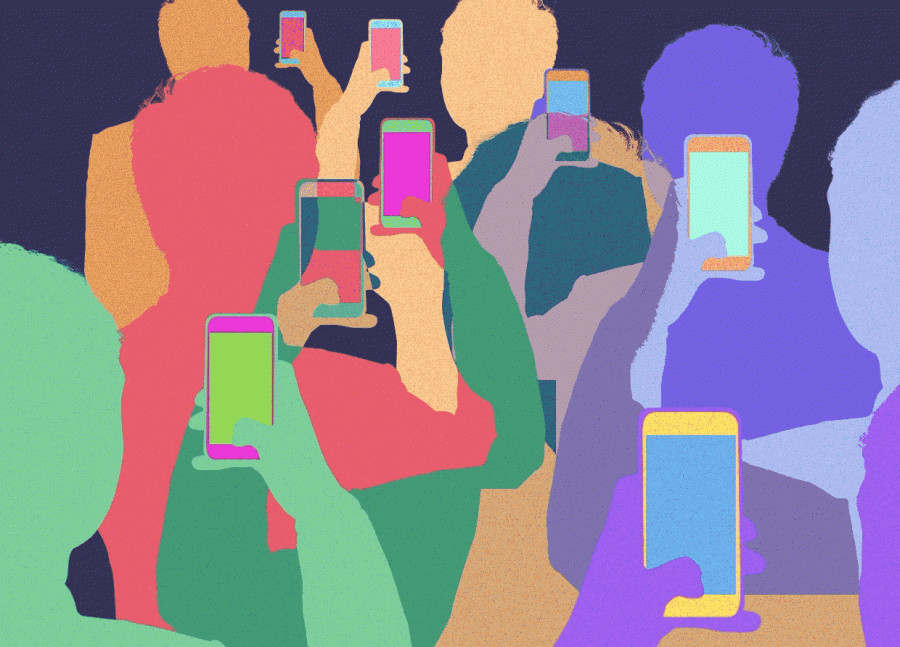Like and Share to Save His Life
How social media activism can leave us feeling traumatized and helpless
Activism is essential to a thriving democracy, but social media can inundate us with the world’s injustices.
A few months ago, I had never heard of Brandon Bernard. But over the course of just a few days, I learned his story, familiarized myself with his case, his crime, and his punishment.
Brandon was sentenced to death because of his involvement in the murder of Todd and Stacey Bagley over 20 years ago when Brandon was just 18.
As his execution date drew nearer, there was a frenzy of activism on social media to change his fate and spare his life. Images and videos flooded my various social media feeds, urging me to sign petitions and write to President Trump in a desperate plea for a pardon. The attempts proved ineffective, and the execution was carried out on December 10th.
Brandon’s case was well-known, especially amongst young people, and was the result of the rapid-fire style of advocacy unique to social media. Information was disseminated with incredible speed, and prominent figures such as Kim Kardashian used their platforms to speak up. Millions of people learned Brandon’s story, fought for him, got invested in his life, and experienced the tragic news of his death together.
Brandon’s death was not an isolated incident—it was not a problem that could be fixed in just a few weeks and with a handful of petitions—racism, the persistence of the death penalty, and Trump’s election all contributed.
While social media campaigns such as this one have worked to force change, they have also placed an inordinate amount of pressure on those using social media—young people—to solve problems that stretch back generations and are tangled in countless institutions.
In the weeks since Brandon’s death, I have seen posts about other death row inmates. Every post is slightly different, but the calls to action are all united by one thing: the burden of responsibility they place on the viewer to do something.
If we don’t act now, this man will die.
If you don’t call this number, her killer will walk free, they warn subtly.
Though it is never said outright, the message is severe: if the outcome of this situation is unfavorable, your inaction—yes, your inaction—will be at least in part to blame. The creators of each post certainly don’t mean to have such a harsh undertone, but it is inevitable when the issues deal so deeply with people’s lives. When you view a post like this, being a bystander feels almost as bad as being the one who pulled the trigger, the judge who issued a death sentence, or the person who committed an assault.
The issues change, but the tone is the same. There is a guilting aspect, an unfortunate necessity in trying to get the attention of strangers on the internet. “Please don’t scroll!” and “If you cared about [important issue], why don’t you care about [other important issue]?” are popular phrases I’ve come across. As I scroll through Tiktok, the videos come rapidly and without relent—as is the nature of a social media feed that never truly ends. I have seen countless videos of people asking for financial support to save them from eviction, abuse, medical bills, and homelessness.
I take in information about Uighur Muslims in China being forced into concentration camps, images of people in the Philippines clinging to driftwood after a deadly typhoon, reports of the abuses taking place in ICE detention centers, and so much more. Everyone is trying to make their voices heard, but too often the individual pleas get lost in the cacophony, and the viewer is left overwhelmed and distressed.
We are constantly getting peeks into the lives of countless strangers and their struggles, reminded of the horrors and injustices that continue to plague the world.
Of course, there is an incredible privilege in being able to watch instead of experience—in escaping with just the click of a button and a screen gone black. But these small doses of tragedy do not leave us unscathed—each one is like a tiny cut, all intersecting and intensifying the next. This can be described in more technical terms: microtrauma, a phenomenon that one psychologist describes as “seemingly insignificant experiences that are emotionally injurious to oneself or another” and can accumulate over time to cause psychological damage.
The microtrauma stemming from social media harshly affects BIPOC (Black, Indigenous, and people of color) individuals, many of whom are forced to bear witness to those who look like them undergoing traumatic experiences.
As Danielle Hairston, a psychiatrist at Howard University and the president of the APA’s Black Caucus, puts it, “If every day, you’re seeing a video of someone who looks like you—someone who could be you or your family member—murdered or beaten, what’s the difference between that and you experiencing it in your own family?”
The video of George Floyd’s death circulated widely on social media over the summer, and while it brought together millions of people to protest against police brutality, it also likely traumatized many of the Black individuals watching, who saw in Floyd the possible fate of a parent, a sibling, a mentor, a friend.
Along with their ability to cause positive social change, Instagram, Tiktok, and Twitter have the potential to cause irreparable damage to the billions of people who log on each day and are bombarded with images and videos of death and abuse, loss and injustice. And the negative effects of social media fall largely on Gen Z, the generation most likely to use social media by far. Social media has arguably pushed us to “the brink of the worst mental-health crisis in decades,” as one journalist puts it—only 45% of Gen Zers say that their mental health is good or very good, 11 percentage points less than Millenials. Many of us have become desensitized to the horrors we witness through our screens, paralyzed into inaction.
The goal of social media activism is to raise awareness about issues, to gain support for a cause or right a wrong by rallying far more people than could ever have been made aware by previous forms of communication. Many posts urge us to simply boost a message so that others can see it, but this method of sharing a story without any real means to tackle the problem behind it can leave the issue feeling unresolved. We like and share, but then what? There is no resolution, no tangible result despite likes and views stretching into the millions.
Hundreds of thousands of people signed petitions for his pardon, but Brandon Bernard was executed anyway. How little power we sometimes have is demoralizing, to the point that we grasp at any chance to feel like we are making a difference—one petition to stop Brandon’s execution displays the names of people who are still signing it, weeks after Brandon’s death.
I am not saying that we should stop using social media to advocate for important issues or log off altogether, but I know from my own experience that what we witness on social media can be incredibly damaging. I have seen people on Tiktok recounting stories of child abuse, begging for money so that they can afford their insulin, telling the story of their sexual assault and exposing a perpetrator who has gone unpunished, and heavily suggesting that they are going to commit suicide.
I cannot say that I have been unaffected by all of this, by hearing the cries for help yet feeling unable to cause any real change. I understand that I cannot save everyone, but there is a hollowness within me each time that realization sinks in.
Responsible citizens should continue to share their stories and fight for change—to choose ignorance and inaction is never the answer, and many social media campaigns have certainly been effective in gaining justice. But we also need to acknowledge that the images and videos constantly flooding our senses during our time online and the pressure to fix every issue we see may be causing more harm than we realize.
If we shoulder the weight of the world each time we open our phones, we may break. And no amount of likes or shares will be able to put us back together.

Sam Podnar is a senior at NASH. When she's not writing, she enjoys baking, reading, and talking too much about local politics.



